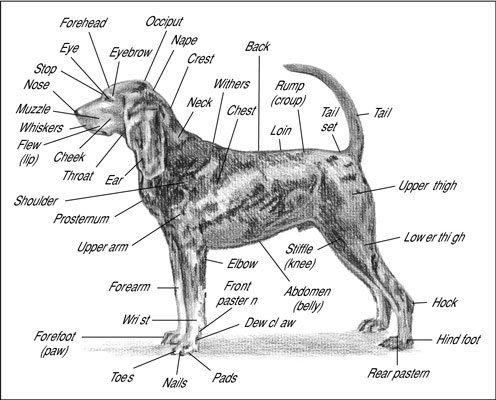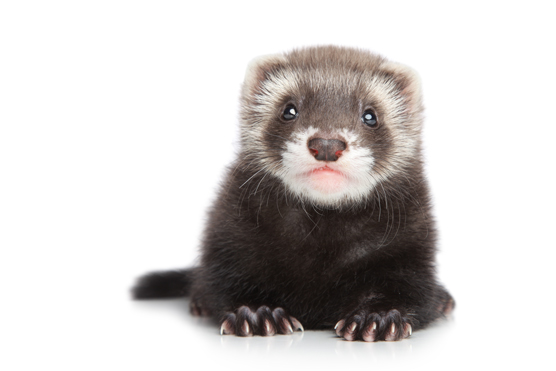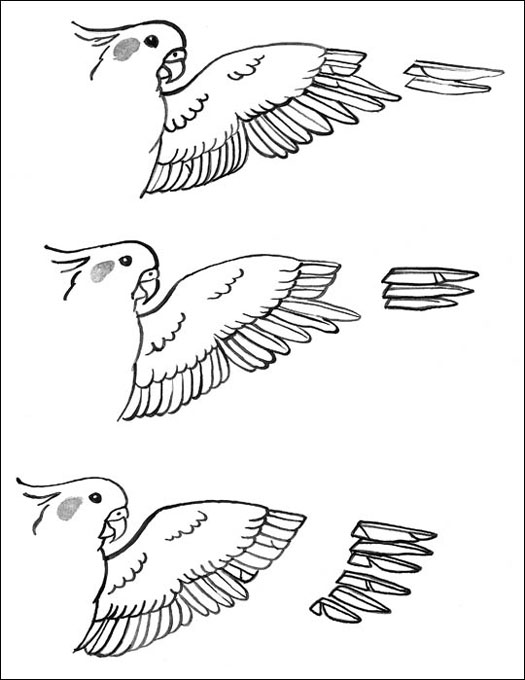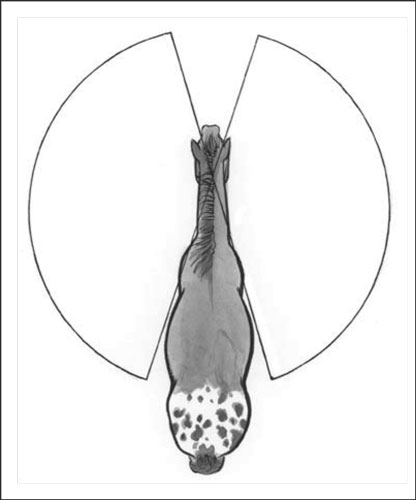約克夏犬:AKC 品種標準
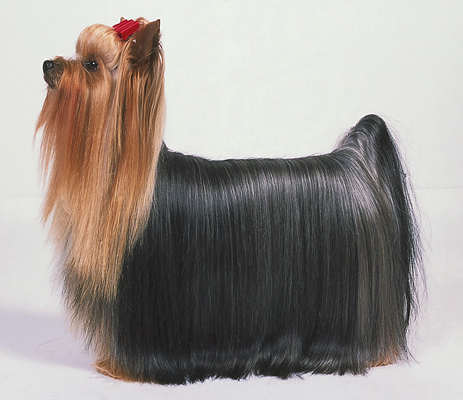
深入了解約克夏犬AKC官方品種標準,包括體型、毛色、外表特徵和展示要求。專業解析幫助您全面認識這個可愛的玩具犬品種。
馬不能坐在你腿上;另一方面,你不能對小貓狂奔。像任何動物一樣,馬需要日常護理和定期梳理。如果您要購買一匹馬,您需要知道要問的正確問題,如果您擁有一匹馬,您需要能夠識別您的馬何時遇到健康緊急情況。馬是一個很大的責任,但他們值得!
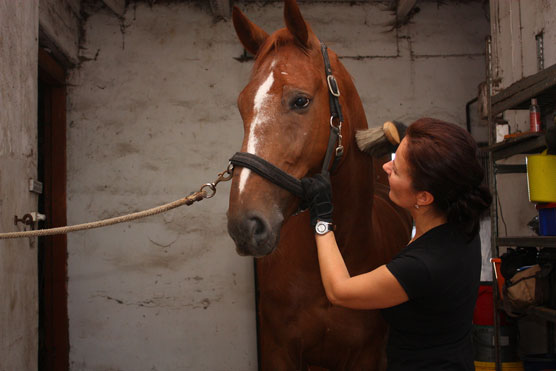
©作者:Anastasija Popova/Shutterstock.com
買馬是件大事。這是一個值得併且需要一些思考和準備的過程。當您開始騎馬冒險時,請向賣家提出以下問題:
你要馬多少錢?這個價格可以商量嗎?
這匹馬多大了?
馬有多大?(幾隻手?)
馬的性別和大小是多少?
騎馬屬於哪個學科?
馬有沒有受過專業訓練?
這匹馬適合初學者嗎?
這匹馬適合孩子嗎(如果你有孩子會騎馬)?
馬是否裝入拖車?
馬有沒有嗑嗑(一邊吸空氣一邊咬柵欄)、編織(從前腿到前腿反復來回移動)、被拴時向後拉等不良習慣?
這匹馬是否有任何醫療問題或有過諸如絞痛、跛足或過敏等醫療問題的病史?
為什麼要賣馬?
照顧馬是一項重大責任,您必須每天照顧您的馬友。以下列表描述了您每天需要為您的馬完成的任務:
保持您的馬干淨和好看是擁有馬匹的重要組成部分,此外,它可以很有趣!以下是您需要方便的美容工具列表:
橡膠咖哩
硬毛刷
軟刷
脫落刀片
布
鬃毛和尾巴刷
鬃毛和尾巴梳理器
蹄鎬
蹄刷
沐浴用品(如洗髮水、護髮素和海綿)
剪子
您的馬和您和其他所有動物一樣,容易出現健康問題。下表中症狀列中的問題值得立即關注並致電獸醫。
| 症狀) | 可能的原因 | 執行步驟 |
|---|---|---|
| 流血的 | 受傷 | 施加壓力;打電話給獸醫 |
| 尿血 | 嚴重感染或膀胱損傷 | 立即致電獸醫 |
| 當食物從 嘴裡出來時,低著頭咳嗽和流口水 |
窒息 | 馬可以呼吸,但立即呼叫獸醫 |
| 無法站立;驚人的 | 重病 | 立即致電獸醫 |
| 液體,惡臭的排泄物 | 腹瀉 | 立即致電獸醫 |
| 大汗淋漓,躺下起床,刨地, 咬腹 |
絞痛 | Remove food; call vet immediately |
| Rapid breathing, raspy breathing, heavy coughing | Illness or infection | Call vet immediately |
| Refusal to eat | Serious illness or mild colic | Call vet immediately |
| Severe pain | Injury or illness | Call vet immediately |
| Straining to defecate or urinate | Intestinal or urethral blockage | Call vet immediately |
| Swelling or body part that’s hot to the touch | Injury | Call vet immediately |
| Teary eye; closed eye; red eye; cloudy eye | Eye injury or infection | Call vet immediately |
| Temperature significantly above or below 98–101.5ºF |
Fever | Call vet immediately |
To see things from the horse’s perspective, you need to know — literally — how the horse takes in the world. Humans evolved to be hunters and gatherers, chasing down prey and finding appropriate plants to eat. Horses, on the other hand, are built to avoid hunters and eat nearly everything that grows around them. Given these fundamental distinctions, the horse’s senses are bound to have nuances that are somewhat different from those of a human.
Sight
Sight is the most important equine sense. For a prey animal like the horse, in the wild, good eyesight means the difference between life and death. Literally seeing trouble coming is the best way the horse has to make it to safety before a predator gets too close.
Because horses have long, narrow heads with eyes on either side, they have the ability to take in more of the view than humans do. When their heads are facing forward, horses have a nearly 180-degree field of vision. They can see in front of and almost all the way around their bodies, though they do have some blind spots.
One of a horse’s blind spots is directly behind, so you should never approach a horse from the back unless the horse already knows you’re there.
No one knows for sure how far horses can see, mainly because horses have trouble pronouncing the letters on eye tests. Scientists who have done experiments in this field have made some educated guesses that horses can see pretty darn far, in the realm of at least hundreds of yards away. Horses can distinguish patterns, which means they’re able to take in fine details. They can also perceive depth well.
Horses also have much better night vision than humans. Many a rider has been out on a dark, moonless trail, dumbfounded by his or her horses’ ability to see where the pair are going despite the incredibly dim light.
Scientists know far less about horses’ color vision than they do about other areas of equine sight, but they’re certain that horses see many of the same colors that we see, with two exceptions: red and green. In fact, they believe that horses have the same color vision as humans who suffer from red-green color blindness. That said, horses are still able to pick out the greenest grass in a field!
Hearing
A species that survives by getting a head start on marauding predators needs a pretty good sense of hearing. The fact that horses have survived all the way to modern times is testimony to their incredible hearing, which is considerably better than a human’s.
If you look at the shape of the horse’s ear, you can see that it’s built sort of like a funnel. With this design, the ear can capture sound in its outer part and channel it down into the ear canal. The broad outer part of the horse’s ear very adequately takes in the slightest sound in the horse’s environment.
Using very mobile ears, horses constantly monitor the world around them. Just imagine trying to pay complete attention to different sounds coming in to either ear at the same time. Impossible for a human, yet the horse does this on a steady basis. A horse can take in the sounds of a car driving by, children playing, a bird chirping and a human approaching, all at once, from different places in the environment. The horse then processes that information and makes split second decisions about whether to react — all while picking out the best blades of pasture grass or meandering down a rocky trail. The process really is mind-blowing.
Loud, unfamiliar noises can send a relaxed horse into a tizzy. On the other hand, a placid, reassuring sound can ease a horse’s worries. It’s amazing to see how a frightened horse can be comforted by a soft, gentle voice from a calm and confident human. Keep this fact in mind when handling your horse in a particularly noisy or frightening environment.
Smell
Like most non-human animals, horses have an acute sense of smell that they regularly employ to provide them with information on what is going on around them. Horses use their sense of smell in a number of different and important ways.
Nature equipped the equine with a strong olfactory sense that can tell the animal whether a predator is near. All it takes is a strong upwind breeze to bring a dangerous scent to the attention of a wild herd. After getting a whiff of the predator, the herd literally high-tails it (their tails stick way up in the air as they flee) out of there in a flash.
Horses also use smell as part of their complicated social structure. Horses typically greet each other nose to nose, each taking in the odor of the other. Horses also come to recognize each other by scent as well as by sight. Mares and foals quickly memorize each other’s scents and use this information to help locate each other in a crowd of horses.
Most horses also greet humans in the same way. When you introduce yourself to a horse for the first time, notice how the horse reaches out his muzzle to sniff you. Given this, the most polite way to approach a horse is with the back of your hand extended so the horse may take in your personal scent. Letting a horse breathe in your scent tells the animal that you are a fellow herdmate (not a predator), and usually makes the horse more agreeable to being handled.
Touch
The equine sense of touch is an important (although often overlooked) element to the horse. Although many people think that horses have a tough hide, they really don’t. Their skin is tougher than our human epidermis, but it is still rich with nerve endings.
If you sit on a pasture fence and watch a herd of horses for a few hours, you’ll see plenty of evidence of how horses use touch to communicate with each other. Mothers reassure their babies with a brush of the muzzle; comrades scratch each other’s itches with their teeth. Whenever a message needs to be sent from one horse to another, visual cues and touch — or the threat of it — are nearly always used.
Humans can also use touch to convey messages to the horse. A gentle rub down, a pat on the shoulder, a vigorous massage in just the right place — these are all ways of saying, “I’m your friend” to a horse. Sometimes, if you’re lucky, you’ll get a similar tactile message in return.
Check out the following resources as your appetite for equine (horse) knowledge increases.
Breed registries
Appaloosa Horse Club
2720 W. Pullman Rd.
Moscow, ID 83843-0903
(208) 882-5578
www.appaloosa.com
International Colored Appaloosa Association
4610 New Mexico 206
Milnesand, NM 88125
(547) 238-4280
www.icaainc.com
Arabian Horse Association
10805 E. Bethany Dr.
Aurora, CO 80014
(303) 696-4500
www.arabianhorses.org
American Miniature Horse Association
5601 South IH 35W
Alvarado, TX 76009
(817) 783-5600
www.amha.com
American Morgan Horse Association
4066 Shelburne Rd., Suite 5
Shelburne, VT 05482-0960
(802) 985-4944
www.morganhorse.com
American Paint Horse Association
P.O. Box 961023
Fort Worth, TX 76161-0023
(817) 834-2742
www.apha.com
American Quarter Horse Association
1600 Quarter Horse Dr.
Amarillo, TX 79104
(806) 376-4811
www.aqha.com
Racking Horse Breeders Association of America
67 Horse Center Rd., Suite B
Decatur, AL 35603-9735
(256) 353-7225
www.rackinghorse.com
American Saddlebred Horse Association
4083 Iron Works Pkwy.
Lexington, KY 40511-8434
(859) 259-2742
www.saddlebred.com
United States Trotting Association (Standardbreds)
6130 S. Sunbury Rd.
Westerville, OH 43081-9309
(877) 800-8782
www.ustrotting.com
Tennessee Walking Horse Breeders’ & Exhibitors’ Association
P. O. Box 286
Lewisburg, TN 37091-0286
(931) 359-1574
www.twhbea.com
The Jockey Club (Thoroughbreds)
821 Corporate Dr.
Lexington, KY 40503-2794
(859) 224-2700
www.jockeyclub.com
Educational organizations
American Horse CouncilDocument1
1616 H Street NW, 7th Floor
Washington, DC 20006
(202) 296-4031
www.horsecouncil.org
CHA (Certified Horsemanship Association)
1795 Alysheba Way, Suite 7102
Lexington, KY 40509
(859) 259-3399
www.cha-ahse.org
United States Pony Clubs, Inc.
4041 Iron Works Pkwy.
Lexington, KY 40511-8462
(859) 254-7669
www.ponyclub.org
Equine rescue groups
American Standardbred Adoption Program
745 S Main St.
Viroqua, WI 54665
(608) 689-2399
www.4thehorses.com
Standardbred Retirement Foundation
42 Arneytown-Hornerstown Rd.
Cream Ridge, NJ 08514
(609) 738-3255
www.adoptahorse.org
The Horse Protection League
P. O. Box 741089
Arvada, CO 80006
(303) 216-0141
thehorseprotectionleague.org
Equine equipment
Dover Saddlery, Inc.
525 Great Rd.
Littleton, MA 01460
(800) 406-8204
www.doversaddlery.com
Jeffers Equine
P.O. Box 100
Dothan, AL 36302
(800) 533-3377
www.jeffersequine.com
Logan Coach Trailers
2990 S. 800 W.
Nibley, UT 84321
(800) 742-7047
MD Barns
720 E. Locust Street
Ontario, CA 91761
(800) 343-2276
www.mdbarnmaster.com
Morton Buildings, Inc.
P.O. Box 399
Morton, IL 61550-0399
(800) 447-7436
www.mortonbuildings.com
State Line Tack
395 Oak Hill Rd., Suite 210
Mountain Top, PA 18707
(888) 839-9640
www.statelinetack.com
Sundowner Trailers, Inc.
9805 OK Hwy, 48 South
Coleman, OK 73432-8523
(800) 438-4294
www.sundownertrailer.com
Equine slaughter information
American Association of Equine Practitioners
4033 Iron Works Pkwy.
Lexington, KY 40511
(859) 233-0147
www.aaep.org
Equine Advocates, Inc.
P.O. Box 354
Chatham, NY 12037-0354
(518) 245-1599
www.equineadvocates.org
Equine Protection Network, Inc.
P.O. Box 232
Friedensburg, PA 17933
www.saveamericashorses.net
Humane Society of the United States
1255 23rd Street NW, Suite 450
Washington, DC 20037
(866) 720-2676
www.humanesociety.org
Equine retirement facilities
Apple River Ranch Equine Retirement
415 Jackson St., Box 358
Hanover, IL 61041
(815) 591-3819
appleriver1.tripod.com
The P.E.I. Equine Retirement Society
Milburn, O’Leary RR#2
Prince Edward Island, C0B-1V0
Canada
(902) 859-3116
www.angelfire.com/ca/equineretirementsoc/
Heavenly Horse Haven
P.O. Box 391998
Anza, CA 92539-1998
(951) 551-3561
www.heavenlyhorsehaven.org
Pet loss hotlines
ASPCA Grief Counseling Hotline
(877) 474-3310
Tufts University School of Veterinary Medicine (Massachusetts)
(508) 839-7966
Virginia-Maryland Regional College of Veterinary Medicine
(540) 231-8038
Michigan State University College of Veterinary Medicine
(517) 432-2696
Washington State University College of Veterinary Medicine
(866) 266-8635
Activity organizations
American Endurance Ride Conference (AERC)
P.O. Box 6027
Auburn, CA 95604
(866) 271-2372
www.aerc.org
Cowboy Mounted Shooting Association
P.O. Box 157
Roswell, NM 88202
(888) 960-0003
www.cowboymountedshooting.com
National Reined Cow Horse Association
1017 N. Hwy. 377
Pilot Point, TX 76258
(940) 488-1500
www.nrcha.com
North American Trail Ride Conference (NATRC)
P.O. Box 969
Beatrice, NE 68310
(303) 688-1677
www.natrc.org
Ride & Tie Association
P.O. Box 2750
Rancho Santa Fe, CA 92067
www.rideandtie.org
United States Dressage Federation
4051 Iron Works Parkway
Lexington, KY 40511
(859) 971-2277
http://usdf.org
United States Equestrian Federation
4047 Iron Works Parkway
Lexington, KY 40511
(859) 258-2472
Western Dressage Association of America
P.O. Box 2349
Parker, CO 80134
(720) 662-4584
www.westerndressageassociation.org
Other equine organizations
American Farriers Association
4059 Iron Works Pkwy., Suite 1
Lexington, KY 40511-8434
(859) 233-7411
www.americanfarriers.org
American Riding Instructors Association
28801 Trenton Ct.
Bonita Springs, FL 34134-3337
(239) 948-3232
www.riding-instructor.com
The Equine Connection National AAEP Locator Service (Horse vets)
https://aaep.org/horse-owners/get-dvm
North American Riding for the Handicapped
P.O. Box 33150
Denver, CO 80233
(800) 369-RIDE (800-369-7433)
www.narha.org
Horse information Websites
HorseIllustrated.com
www.horseillustrated.com
InfoHorse.com
www.infohorse.com
The International Museum of the Horse
www.imh.org
TheHorse.com
www.thehorse.com
Horse publications
Equus
(800) 829-5910
www.equusmagazine.com
Horse & Rider
(877) 717-8928
www.horseandrider.com
馬畫報
(844) 330-6373
www.horseillustrated.com
實用騎士
(877) 717-8929
www.practicalhorsemanmag.com
西部騎士
(817) 737-6397
www.westernhorseman.com
Young Rider
(844) 330-6373
www.youngrider.com
推薦閱讀
以下書籍可以幫助您更多地了解馬匹護理和馬術的不同方面,或者通過讓您保持體形來幫助您成為更好的騎手。
深入了解約克夏犬AKC官方品種標準,包括體型、毛色、外表特徵和展示要求。專業解析幫助您全面認識這個可愛的玩具犬品種。
詳細介紹狗的解剖結構,包括鼻子、耳朵、眼睛等部位。了解狗的身體結構和特徵,提升您對犬科動物的認識。
臘腸犬適合您嗎?在您選擇臘腸犬之前,請考慮擁有臘腸犬的優缺點,以便做出明智的決策。
掌握選擇健康雪貂的技巧,並學習如何為寵物保姆提供重要信息,以確保雪貂在您的缺席期間得到最佳照顧。
學會如何修剪玄鳳鸚鵡的翅膀羽毛,根據安全需要調整飛行能力。
在訓練您的小狗時,考慮適合個性、體型和年齡的方向和解決問題的技巧,旨在建立小狗對您及其周圍世界的信心。
查看這些馬匹來源中的每一個——從個人賣家到飼養員再到野馬收養——當您嘗試尋找和購買適合您的馬匹時。
根據您的傑克羅素梗的戶外活動,您應該每月或更短時間給他洗澡,並定期護理以保護他的皮膚和毛髮。
探索非運動犬品種的特徵與健康問題,幫助您了解這些迷人的伴侶犬。
了解馬生活的世界——它們如何通過感官感知周圍的世界——以了解並妥善照顧您的馬。
